Jews
When Newark was founded in 1666, there already existed a flourishing, if small, Jewish community in New York City. Probably a few Jewish peddlers and travelers settled in the new city, but there is no record of a Jewish presence in Newark until 1844, when Louis Trier and his family set up a small leather tannery. In time, other Jewish families arrived, and the men began working in the city as peddlers, shopkeepers, butchers, tanners and owners of small factories producing many useful items.
In 1847, the B’Nai Jeshurun Synagogue was founded by Isaac Cohen on the third floor of his residence. With increased numbers, they built the synagogue on Washington Street. At first, the area around Springfield Avenue was the Jewish center in Newark, where approximately 35 families lived, soon increasing to 60.
The turn of the century brought many more Jews from Germany and Russia. The Jewish population grew from 5,500 in 1900, to over 22,000 in 1910. Originally they were confined to the Old Third Ward, because of prejudice and jealousy by other white ethnic groups, with African Americans and Italians as neighbors. But for the next six decades, Old Jewish Newark began to expand beyond the ghetto into the Clinton Hill section, along High Street (now Martin Luther King Blvd), a major thoroughfare for white people of prominence. Here they built synagogues, the YMHA, and offices. As the 20th Century approached, the Weequahic section became the community’s center, where the businessmen and professionals lived and worshipped.
Jewish people were successful in growing businesses, professional firms, and electing city leaders, including Mayor Meyer C. Ellerstein, who held office from 1933-1941. On the other side of business were the gangsters and criminals, so much a part of the city’s folklore, among them the Jewish mob boss, Abner “Longie” Zwillman.
By the mid-1930s, there were approximately twenty-six Jewish congregations and scores of organizations that addressed the interests of the group. Not all Jews were doing well in Newark between 1900 and 1967, but they were able to leave their mark on the city with a plethora of Jewish social service centers, the grand temples along High Street, and Beth Israel Hospital.
Jews came from many European countries, and shared the languages of Germany, Poland, Austria, and Russia. Add to that the flavor of Yiddish, Hebrew and English. The culture and its social, political, and religious organizations thrived in Newark, until they moved into the suburbs beginning in the 1950s, culminating with the full scale retreat from the Weequahic section after the 1967 Rebellion.
References:
Charles F. Cummings, Knowing Newark: Selected Star-Ledger Columns by Charles F. Cummings.
Dr. Clement Price, “Blacks and Jews in the City of Opportunity, Newark NJ, 1900-1967.”
Students of Essex Catholic High School, “The People of Newark,” Newark 300: A Students’ Topical Review of Newark’s 300 Years, February 1966.
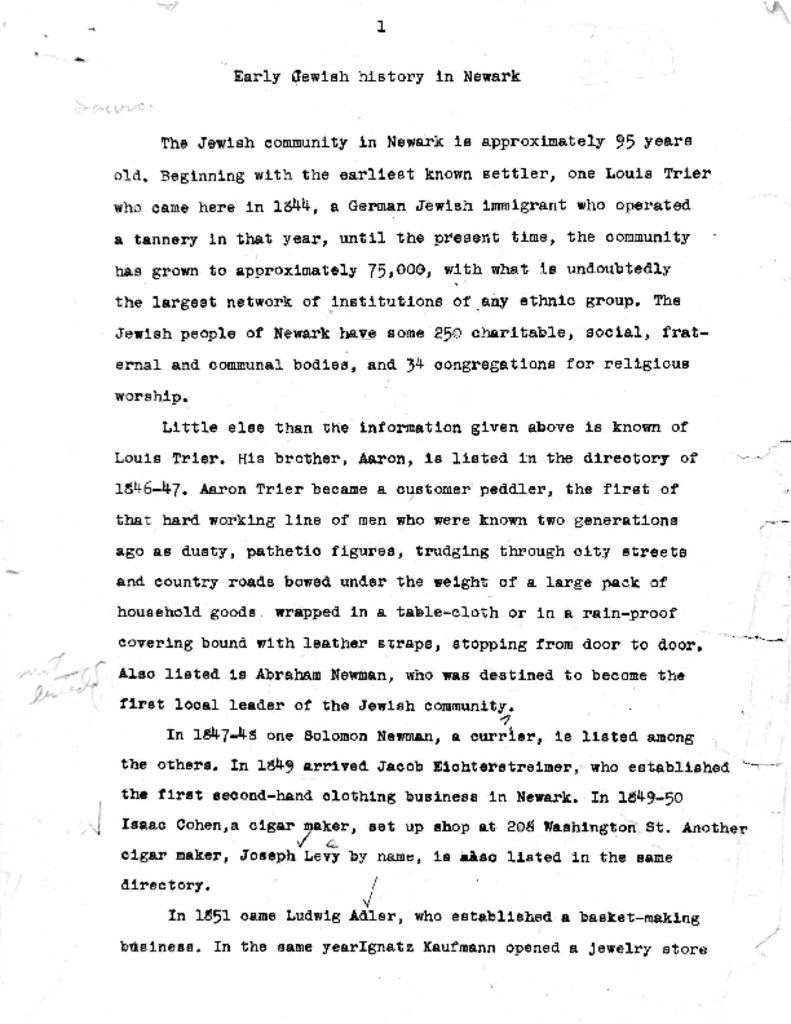
Report of the Works Progress Administration (WPA) in the 1930s on “Early Jewish history in Newark.” The WPA employed millions during the Great Depression through projects such as ethnological surveys of major cities like Newark. — Credit: New Jersey State Archives
Explore The Archives
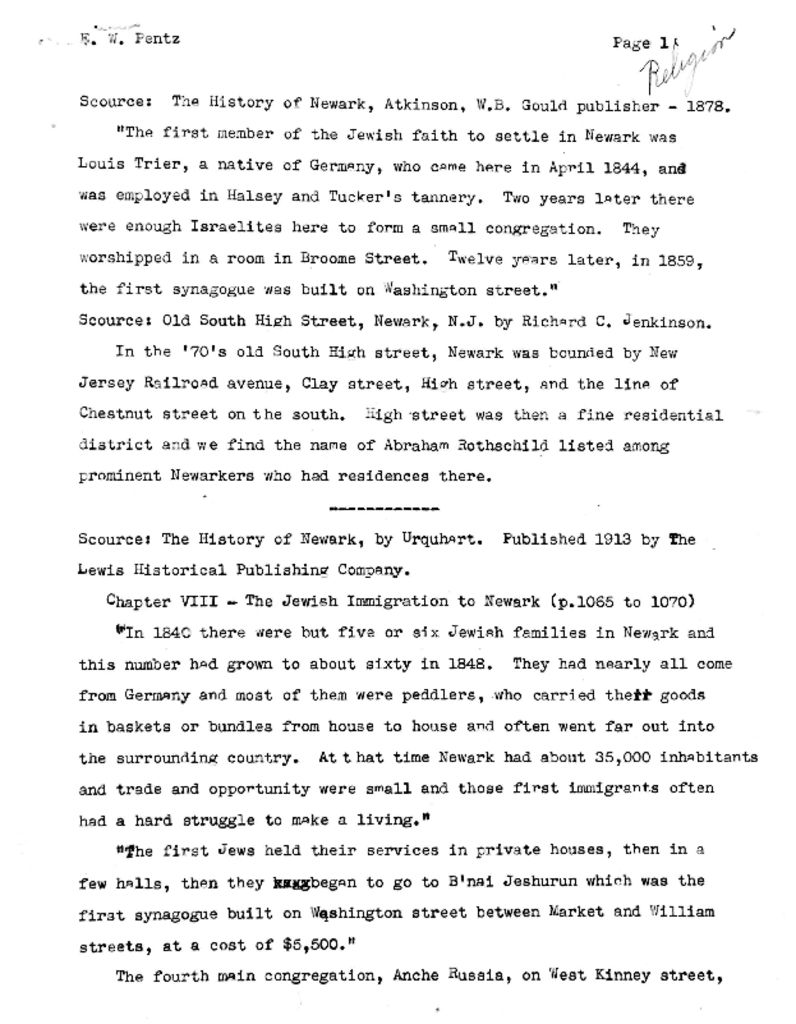
Notes of Works Progress Administration (WPA) staff on sources pertaining to Jewish history in Newark. The WPA employed millions during the Great Depression through projects such as ethnological surveys of major cities like Newark. — Credit: New Jersey State Archives
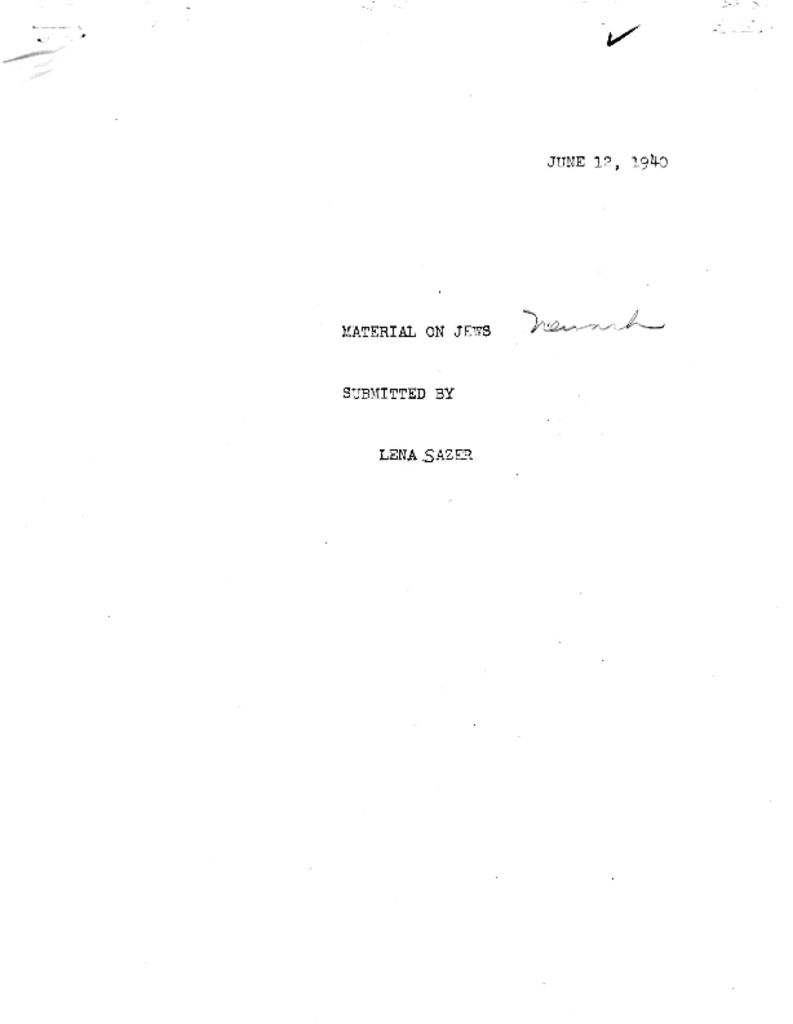
A collection of materials on the Jewish population of Newark, including a list of noteable Jewish residents, compiled by the Works Progress Administration in 1940. The WPA employed millions during the Great Depression through projects such as ethnological surveys of major cities like Newark. — Credit: New Jersey State Archives
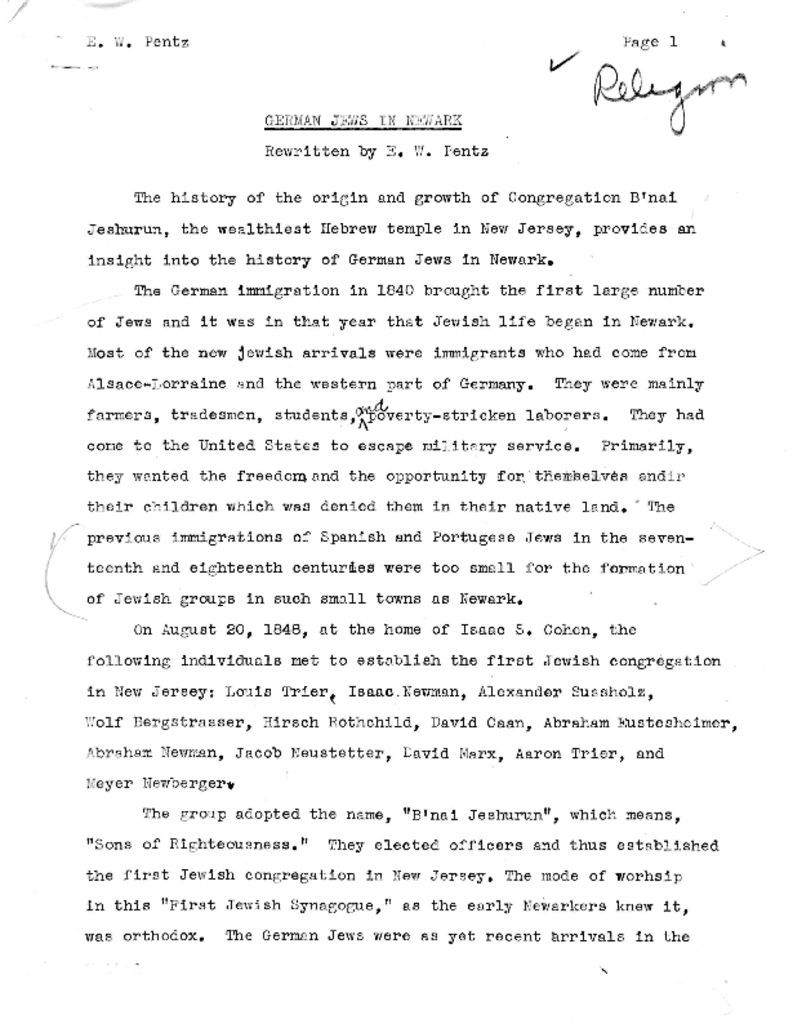
A report of the Works Progress Administration (WPA) on “German Jews in Newark.” The WPA employed millions during the Great Depression through projects such as ethnological surveys of major cities like Newark. — Credit: New Jersey State Archives
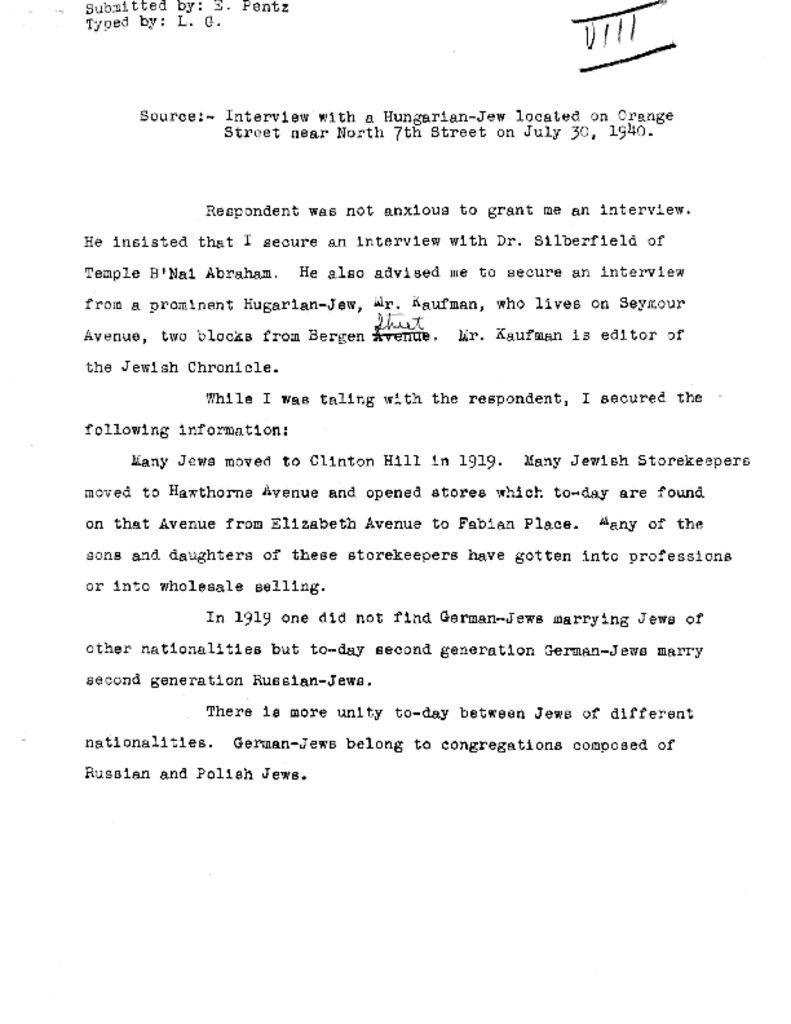
Transcript of an interview of a “Hungarian-Jew” on Orange Street conducted by Works Progress Administration (WPA) staff in 1940. The WPA employed millions during the Great Depression through projects such as ethnological surveys of major cities like Newark. — Credit: New Jersey State Archives
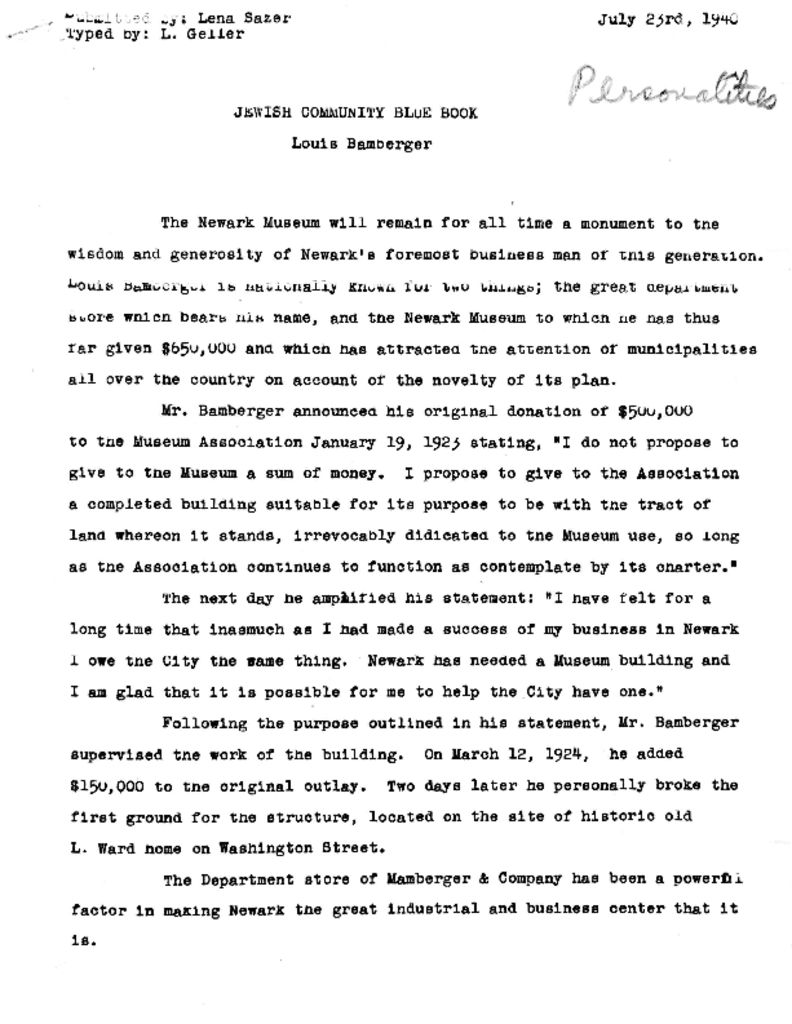
Profile of Jewish Newark resident Louis Bamberger written by staff of the Works Progress Administration (WPA) in 1940. The WPA employed millions during the Great Depression through projects such as ethnological surveys of major cities like Newark. — Credit: New Jersey State Archives
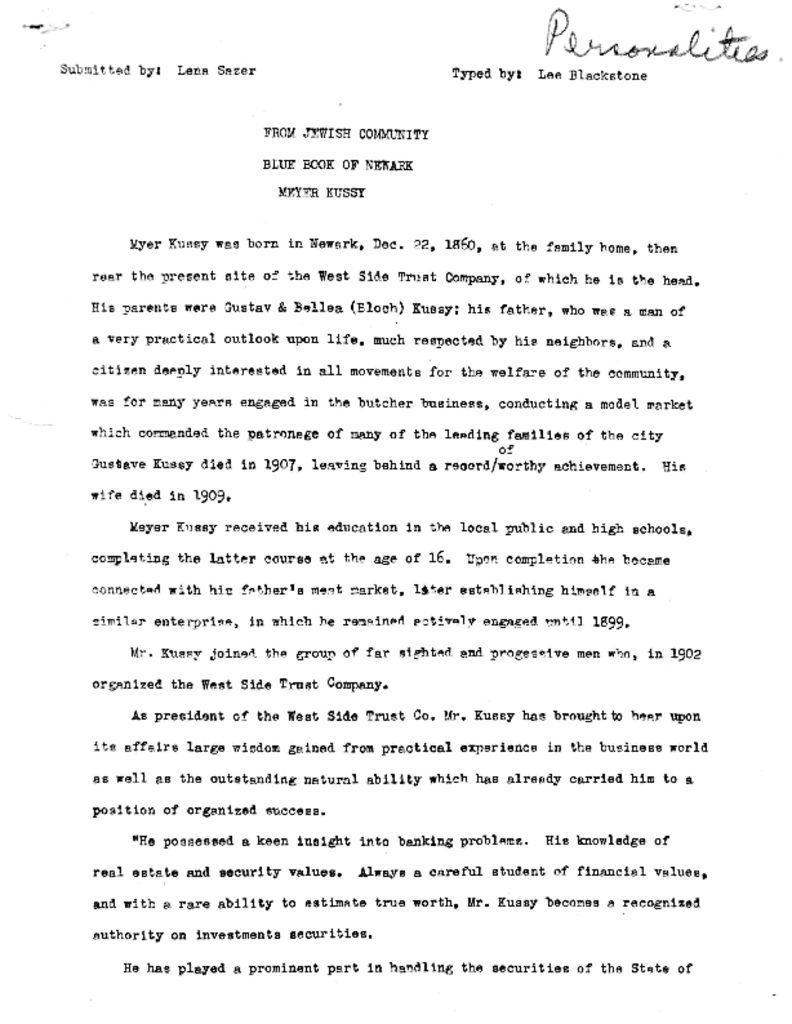
Profile of Jewish Newark resident Meyer Kussy written by staff of the Works Progress Administration (WPA) in 1940. The WPA employed millions during the Great Depression through projects such as ethnological surveys of major cities like Newark. — Credit: New Jersey State Archives
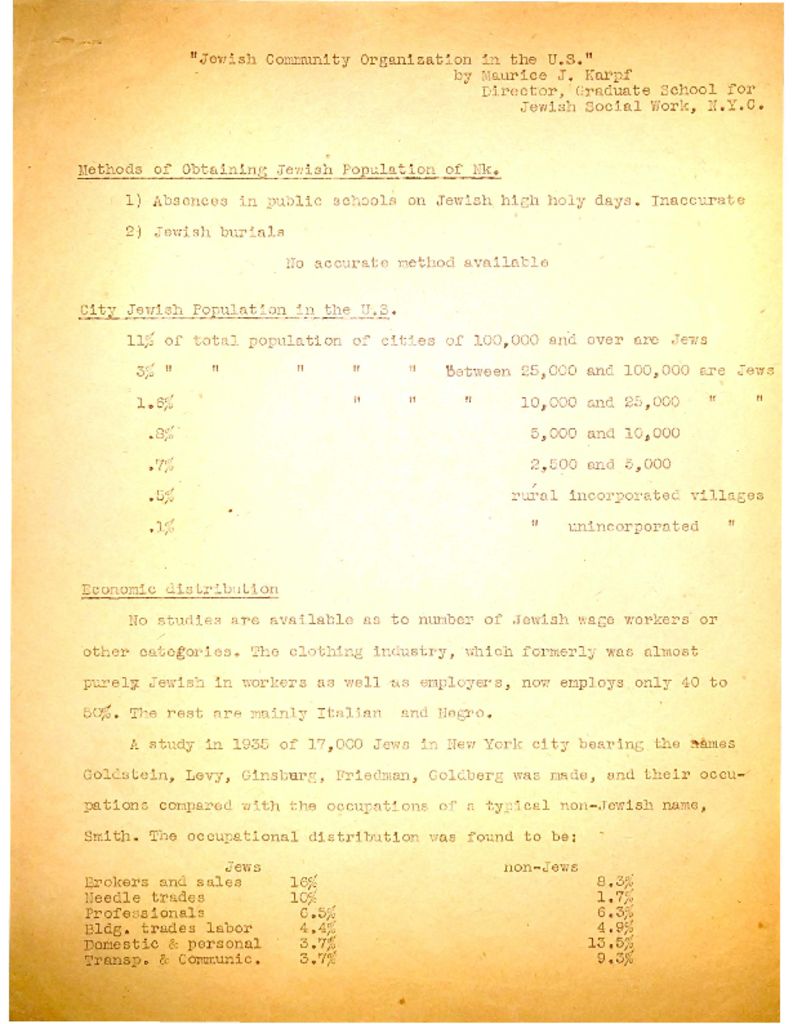
Profile of “Jewish Community Organiation in the U.S.” prepared by staff of the Works Progress Administration (WPA). The WPA employed millions during the Great Depression through projects such as ethnological surveys of major cities like Newark. — Credit: New Jersey State Archives
